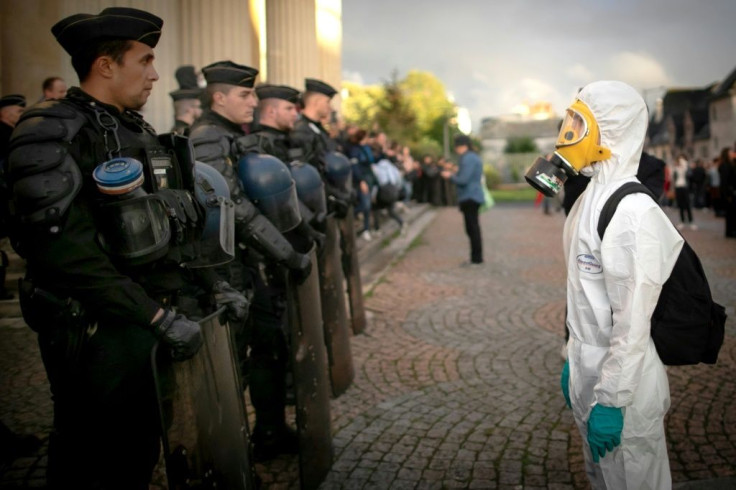Anxiety, Questions Linger After French Chemicals Inferno

Farmers have been banned from selling produce, locals stock up on surgical masks from pharmacies and an acrid smell of pollution hangs in the air.
A week after one of France's worst industrial fires of recent times, the government insists that there is nothing to fear from the effects of the blaze at the Lubrizol factory outside the northern city of Rouen.
But no-one is sure what particles were released into the air by the September 27 fire and some locals and experts complain that the air remains tainted.
The Lubrizol plant, which is owned by US billionaire investor Warren Buffett and makes industrial lubricants and fuel additives, is situated just a few kilometres from the centre of Rouen, a city of some 100,000 people.
The cause of the blaze is not yet known.
The smoke from the inferno, which consumed over 5,000 tonnes of chemical products, spread up to 22 kilometres (14 miles) from the site.
The Lubrizol fire has proved a tipping point in public anger over environmental risks, especially after the lead contamination sparked by the April 15 fire at Notre-Dame cathedral in Paris.
"The information is contradictory," said Rouen resident Agnes Poupel, 65.
"We are told there is an ecological catastrophe but we don't have to worry. That scares us."
Industrial past
Ethan Tocqueville, a pupil at a school in Rouen, said that the air quality appeared to have improved over the last days but windows were still closed at his school.
In sports classes "half of the class was not present because the parents of the children do not want them to go outside," he said.
The government has also banned the harvesting of crops or the sale of animal products from a wide swathe of tainted countryside surrounding Rouen, a decision affecting more than 1,800 farmers whose fields were tainted by the oily soot.
Meanwhile, at a pharmacy in the centre of town, its employee Sarah said she has sold some 400 surgical masks since the fire.
The history of Rouen, famed as the place where Joan of Arc, the teenage heroine of the Hundred Years War was burned at the stake in 1431, is inseparable from industry.
In the Middle Ages, fabrics were one of the economic engines of the city and its river port helped develop relations as far away as South America in the search for products to colour the fabrics.
Looking down from the hill of Saint-Aignan above the city, Guillaume Blavette of the France Nature Environment NGO viewed a succession of factories strung out across the Seine River.
"This is traumatised territory," he said.
'Surrounded by powder kegs'
He said that there were 14 sites in the area that potentially pose a major environmental risk in case of an accident as well as two nuclear power plants 80 kilometres away.
"We don't need to have a catastrophe to have smells. They are already there! We are surrounded by powder kegs basically. We need to live with this," said pensioner Dominique Lefaix.
Some residents point to the industrial history of Rouen and say such incidents are part of living in such an industrialised area which has long been notorious for poor air quality.
"Forty years ago, it stank of oil. You should not forget that Rouen is an industrial town and before there were even stronger smells. It depends on the wind," said Rouen resident Philippe Laisne, 70.
'Nobody knows'
But experts have urged against complacency, pointing to uncertainty over what happens when such products are burned on this scale at a factory making industrial lubricants and fuel additives.
"The biggest question is what kind of products were emitted by the fire," Jean-Francois Narbonne, honorary professor of toxicology at Bordeaux University said.
Health Minister Agnes Buzyn said this week: "Today, no one knows exactly what these products emit when they burn."
"The pollution is real but does not entail public health risks, according to what we know now," she added.
© Copyright AFP {{Year}}. All rights reserved.





















